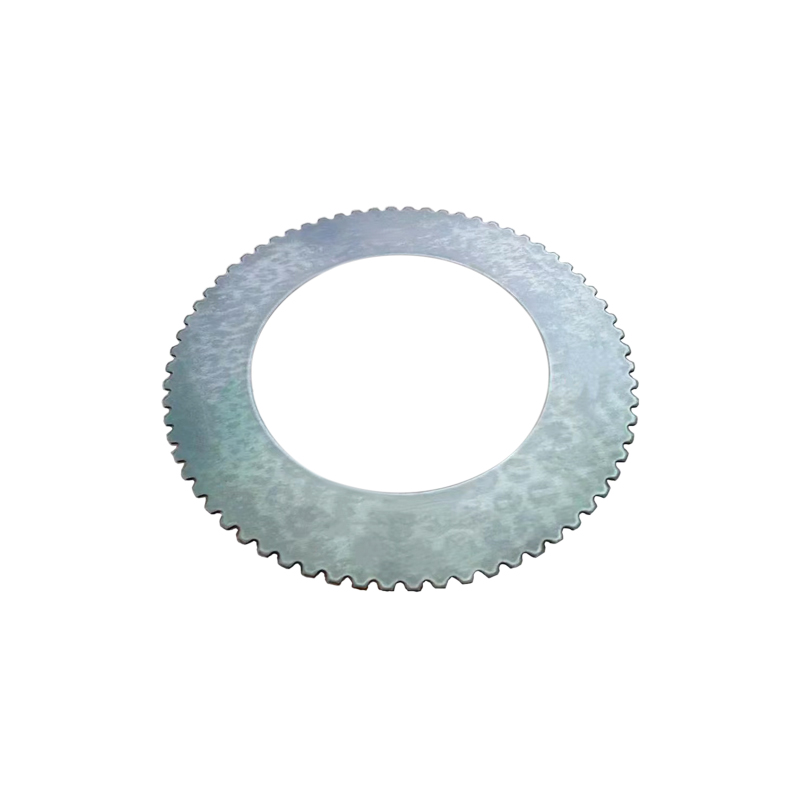Home / News / Industry News / What are the common signs of wear and tear on wheel loader friction discs, and how often should they be inspected for maintenance?
Common signs of wear and tear on wheel loader friction discs include:
Reduced Traction: A decline in traction not only impacts the immediate performance of the wheel loader but also has cascading effects on operational efficiency. Diminished friction disc efficiency translates to compromised torque transfer, resulting in increased wheel slippage and reduced overall tractive effort. This situation is particularly critical in challenging terrains or when handling heavy loads, where optimal traction is paramount for productive operations.
Slipping or Shuddering: The occurrence of slipping or shuddering during acceleration or under load is indicative of intricate issues within the friction disc engagement mechanism. This goes beyond a mere inconvenience; it signifies a fundamental challenge in the drivetrain dynamics. The repercussions can extend to increased mechanical stress on various components, potential damage, and a tangible decrease in the machine's productivity and efficiency.
Increased Slippage on Inclines: Worn friction discs struggling to maintain traction on inclines pose a multifaceted challenge. Not only does this compromise the loader's uphill capabilities, but it also introduces safety risks, especially when dealing with heavy loads. Addressing this issue promptly becomes imperative to prevent accidents, mitigate operational disruptions, and uphold the loader's effectiveness in diverse working conditions.
Unusual Noises: Audible indications such as grinding or squealing noises transcend surface-level concerns with friction disc wear. They signify potential irregularities in contact, structural integrity, or lubrication within the friction disc system. Timely investigation and intervention are critical not only for noise reduction but also to diagnose and rectify the root cause, preventing further damage and ensuring the wheel loader's smooth and reliable operation.
Inconsistent Braking: Inconsistencies in the braking system trace back to compromised friction disc performance. A dependable braking system is not just a matter of convenience but a paramount safety consideration. Inconsistent braking demands immediate attention to avoid accidents, prevent operational disruptions, and mitigate the risk of collateral damage to other components within the braking system.
Vibration: Excessive vibration during operation is more than an operator discomfort; it serves as a tangible indicator of potential uneven wear or damage to the friction discs. Beyond affecting operator comfort, persistent vibration poses a risk of accelerated wear on adjacent components, leading to potential system imbalances. Identifying and rectifying the root cause becomes imperative for sustained operational excellence and the overall health of the loader.
Overheating: Frequent overheating in the transmission area goes beyond a mere operational inconvenience. It signifies increased friction and resistance, often rooted in worn friction discs. This poses a serious risk of damage to critical components, potentially resulting in costly repairs. Timely intervention is crucial to prevent extensive damage, maintain operational efficiency, and uphold the loader's longevity.
Delayed Engagement: Delayed engagement or disengagement during gear shifts is not merely an operational hiccup; it signals compromised responsiveness in the friction discs. This not only affects immediate performance but, if left unattended, can lead to increased wear on associated components. Timely resolution is critical to maintaining the loader's immediate performance and ensuring the long-term health of the entire drivetrain system.
Visible Wear and Tear: Visual inspection serves as a proactive measure to identify signs of wear on friction discs. Thin surfaces, grooving, or uneven wear patterns are early indicators of impending issues. Regular monitoring, coupled with adherence to recommended maintenance intervals, plays a pivotal role in detecting and addressing these visible signs before they escalate into more complex problems, ensuring sustained operational excellence.
Wheel Loader Gearbox Forward Active Friction Disc Clutch Plate

Wheel Loader Gearbox Forward Active Friction Disc Clutch Plate



 English
English 中文简体
中文简体 Español
Español ++86 13567131698
++86 13567131698










